A team of researchers has designed a new type of wearable — and e-skin — that is bacterial resistant and can detect emotion through micro face movements.


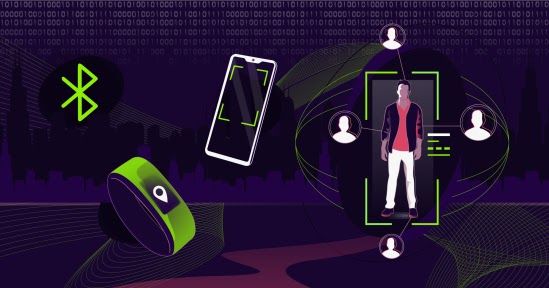
Now that the world is in the thick of the coronavirus pandemic, governments are quickly deploying their own cocktails of tracking methods. These include device-based contact tracing, wearables, thermal scanning, drones, and facial recognition technology. It’s important to understand how those tools and technologies work and how governments are using them to track not just the spread of the coronavirus, but the movements of their citizens.
Contact tracing is one of the fastest-growing means of viral tracking. Although the term entered the common lexicon with the novel coronavirus, it’s not a new practice. The Centers for Disease Control and Prevention (CDC) says contact tracing is “a core disease control measure employed by local and state health department personnel for decades.”
Traditionally, contact tracing involves a trained public health professional interviewing an ill patient about everyone they’ve been in contact with and then contacting those people to provide education and support, all without revealing the identity of the original patient. But in a global pandemic, that careful manual method cannot keep pace, so a more automated system is needed.

In the last few years, most of the data such as books, videos, pictures, medical and even the genetic information of humans are moving toward digital formats. Laptops, tablets, smartphones and wearable devices are the major source of this digital data transformation and are becoming the core part of our daily life. As a result of this transformation, we are becoming the soft target of various types of cybercrimes. Digital forensic investigation provides the way to recover lost or purposefully deleted or hidden files from a suspect’s device. However, current man power and government resources are not enough to investigate the cybercrimes. Unfortunately, existing digital investigation procedures and practices require huge interaction with humans; as a result it slows down the process with the pace digital crimes are committed. Machine learning (ML) is the branch of science that has governs from the field of AI. This advance technology uses the explicit programming to depict the human-like behaviour. Machine learning combined with automation in digital investigation process at different stages of investigation has significant potential to aid digital investigators. This chapter aims at providing the research in machine learning-based digital forensic investigation, identifies the gaps, addresses the challenges and open issues in this field.

“ “The monitoring of human health and well-being with the use of wearables is considered critical in the next generation of biomedical devices,” write the authors. “[But] most existing paper-based devices are designed for one-time use only, functioning under relatively intense capillary flow into the paper, which ceases upon saturation… [Our approach] can function as a key part of a platform for long-term sweat sampling and biomarker monitoring.””
Researchers have designed a paper-based wearable device that can monitor your sweat for 10-days at a time to detect important information about your health.
A team of researchers at Université de Sherbrooke with assistance from a group at Exonetik Inc., has created a wearable supernumerary robotic arm that adds functionality for common human tasks. In their paper published in IEEE Spectrum, the group describes their robotic arm, its abilities and their plans for expanding its functionality.
A supernumerary robotic device is of a type that adds functionality to an existing system. In this case, the team in Canada added a third arm and associated three-fingered hand to a human subject.
The bottom part of the robot is strapped to the waist and hips of the user, anchoring it in place. The robot arm extends from its anchor and performs functions as the user either watches or carries out his or her own activities. The arm is motivated by magnetorheological clutches and hydrostatic transmissions, giving it three degrees of freedom. It does not weigh much, either, just four kilograms. But that is because it has a tethered power/control source that remains on the ground. It also is remotely controlled by another person standing nearby. Future plans call for semi-autonomous control.
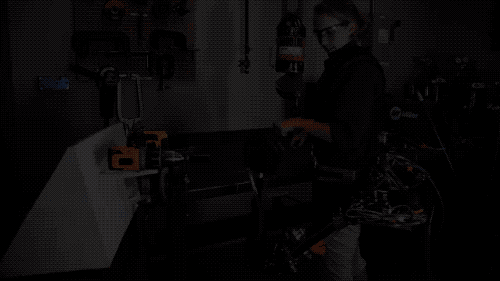
We’ve always had a soft spot for supernumerary robotic limbs here at The Verge, but this latest example of the genre is one of the most impressive we’ve seen to date. Designed by researchers at the Université de Sherbrooke in Canada, it’s a hydraulic arm that sits on the wearer’s hip and uses a three-fingered manipulator to carry out a range of tasks.
Researchers at Tufts University’s School of Engineering have developed biomaterial-based inks that respond to and quantify chemicals released from the body (e.g. in sweat and potentially other biofluids) or in the surrounding environment by changing color. The inks can be screen printed onto textiles such as clothes, shoes, or even face masks in complex patterns and at high resolution, providing a detailed map of human response or exposure. The advance in wearable sensing, reported in Advanced Materials, could simultaneously detect and quantify a wide range of biological conditions, molecules and, possibly, pathogens over the surface of the body using conventional garments and uniforms.
“The use of novel bioactive inks with the very common method of screen printing opens up promising opportunities for the mass-production of soft, wearable fabrics with large numbers of sensors that could be applied to detect a range of conditions,” said Fiorenzo Omenetto, corresponding author and the Frank C. Doble Professor of Engineering at Tufts’ School of Engineering. “The fabrics can end up in uniforms for the workplace, sports clothing, or even on furniture and architectural structures.”
Wearable sensing devices have attracted considerable interest in monitoring human performance and health. Many such devices have been invented incorporating electronics in wearable patches, wristbands, and other configurations that monitor either localized or overall physiological information such as heart rate or blood glucose. The research presented by the Tufts team takes a different, complementary approach—non-electronic, colorimetric detection of a theoretically very large number of analytes using sensing garments that can be distributed to cover very large areas: anything from a patch to the entire body, and beyond.
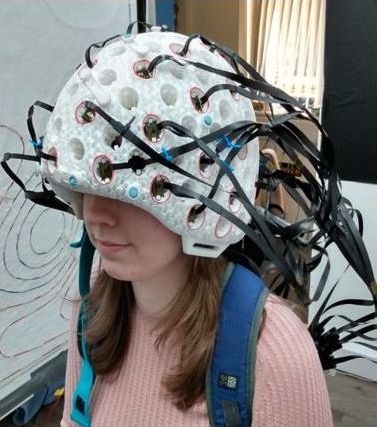
When it comes to monitoring electrical activity in the brain, patients typically have to lie very still inside a large magnetoencephalography (MEG) machine. That could be about to change, though, as scientists have developed a new version of a wearable helmet that does the same job.
Back in 2018, researchers at Britain’s University of Nottingham revealed the original version of their “MEG helmet.”
The 3D-printed device was fitted with multiple sensors that allowed it to read the tiny magnetic fields created by brain waves, just like a regular MEG machine. Unlike the case with one of those, however, wearers could move around as those readings were taking place.
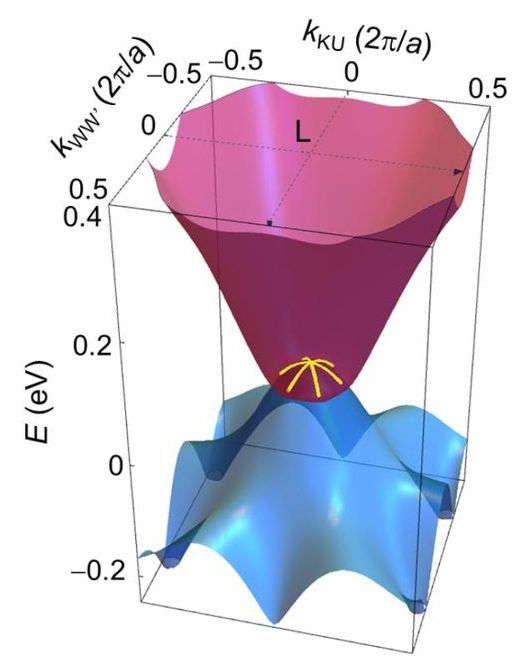
A thin, iron-based generator uses waste heat to provide small amounts of power.
Researchers have found a way to convert heat energy into electricity with a nontoxic material. The material is mostly iron which is extremely cheap given its relative abundance. A generator based on this material could power small devices such as remote sensors or wearable devices. The material can be thin so it could be shaped into various forms.
There’s no such thing as a free lunch, or free energy. But if your energy demands are low enough, say for example in the case of a small sensor of some kind, then there is a way to harness heat energy to supply your power without wires or batteries. Research Associate Akito Sakai and group members from his laboratory at the University of Tokyo Institute for Solid State Physics and Department of Physics, led by Professor Satoru Nakatsuji, and from the Department of Applied Physics, led by Professor Ryotaro Arita, have taken steps towards this goal with their innovative iron-based thermoelectric material.
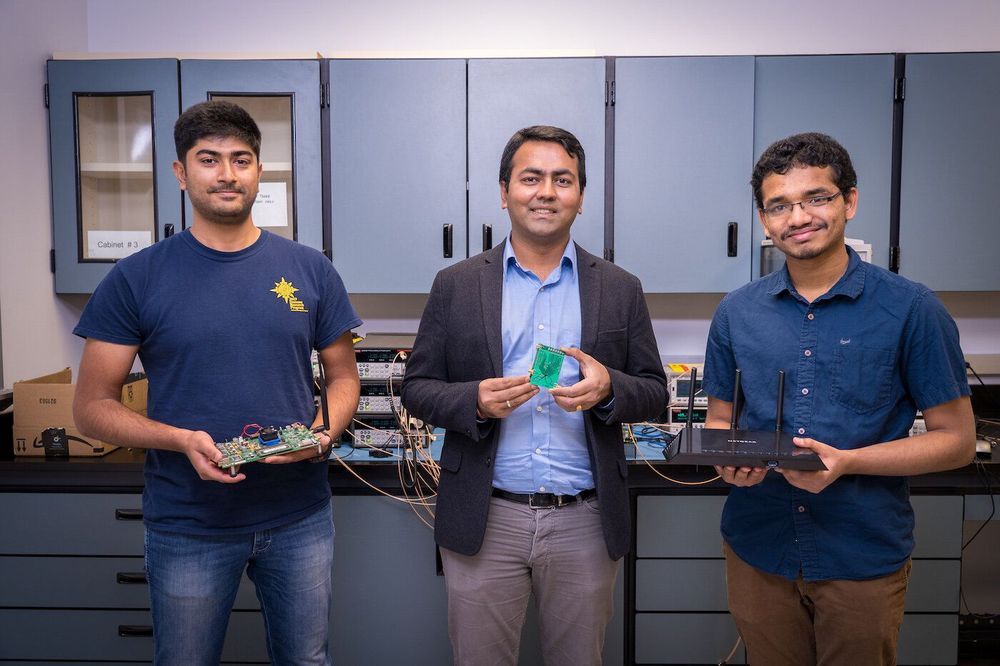
More portable, fully wireless smart home setups. Lower power wearables. Batteryless smart devices. These could all be made possible thanks to a new ultra-low power Wi-Fi radio developed by electrical engineers at the University of California San Diego.
The device, which is housed in a chip smaller than a grain of rice, enables Internet of Things (IoT) devices to communicate with existing Wi-Fi networks using 5,000 times less power than today’s Wi-Fi radios. It consumes just 28 microwatts of power. And it does so while transmitting data at a rate of 2 megabits per second (a connection fast enough to stream music and most YouTube videos) over a range of up to 21 meters.
The team will present their work at the ISSCC 2020 conference Feb. 16 to 20 in San Francisco.